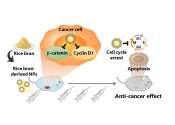Unveiling the mysteries of cell division in embryos with timelapse photography
The beginning of life is shrouded in mystery. While the intricate dynamics of mitosis are well-studied in the so-called somatic cells—the cells that have a specialized function, like skin and muscle cells—they remain ...









